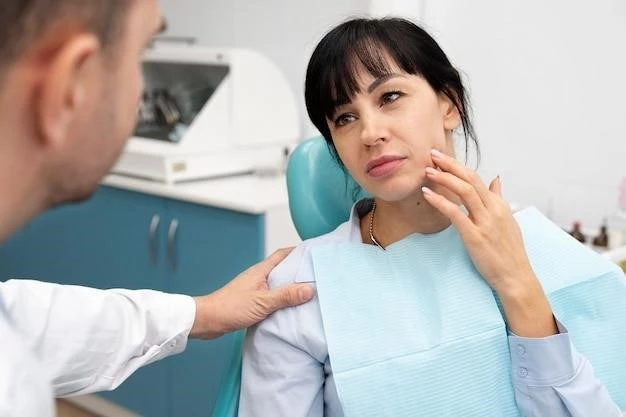Keratosis Focal Palmoplantar Gingival
Introduction
Keratosis Focal Palmoplantar Gingival Disease is a rare inherited genetic disorder that affects the skin condition, particularly in the palms, soles of the feet, and gums. This condition presents with focal areas of thickened skin, known as keratosis, causing pain and discomfort to individuals.
The onset of symptoms usually occurs in childhood or early adulthood. The diagnosis of Keratosis Focal Palmoplantar Gingival Disease can be challenging due to its rarity and variability in presentation. It is crucial to understand the genetic basis of the disorder to provide effective management and treatment options.
This article aims to explore the symptoms, diagnosis, genetic basis, skin condition, treatment options, impact on quality of life, and current research developments related to Keratosis Focal Palmoplantar Gingival Disease. By increasing awareness and knowledge about this condition, we can improve the quality of care and support for individuals affected by this rare disorder.
Symptoms
The symptoms of Keratosis Focal Palmoplantar Gingival Disease typically manifest as focal areas of thickened skin (keratosis) on the palms, soles of the feet, and gums. These areas may be painful, especially when pressure is applied, leading to discomfort and difficulty performing daily activities.
Individuals with this condition may experience pain and tenderness in the affected areas, making tasks like walking or holding objects challenging. The skin abnormalities can range from mild to severe, with some cases involving significant thickening of the skin, which can affect mobility and quality of life.
Moreover, patients may also develop gingival hyperkeratosis, which causes thickening and overgrowth of the gums, potentially leading to issues with eating, speaking, and maintaining oral hygiene. The symptoms of Keratosis Focal Palmoplantar Gingival Disease can vary in severity and presentation, impacting each individual differently.
It is essential for healthcare providers to recognize these symptoms early on to provide appropriate care and management strategies tailored to the specific needs of the patient. Understanding the symptoms of this rare genetic disorder is crucial for accurate diagnosis and timely intervention to alleviate pain and improve the overall quality of life for affected individuals.
Diagnosis

Diagnosing Keratosis Focal Palmoplantar Gingival Disease requires a comprehensive evaluation of the patient’s medical history, symptoms, and a thorough physical examination. The distinctive presentation of focal areas of thickened skin on the palms, soles of the feet, and gums is a key indicator for diagnosis.
Further diagnostic measures may include genetic testing to identify the specific mutation responsible for the disorder. Genetic testing plays a crucial role in confirming the diagnosis of this rare inherited condition and can help determine the likelihood of the disease’s transmission to future generations.
In some cases, a skin biopsy may be performed to analyze the skin tissue under a microscope, providing additional information to support the diagnosis. Imaging studies such as X-rays may also be recommended to assess the extent of bone involvement in individuals with severe symptoms.
A multidisciplinary approach involving dermatologists, geneticists, and other specialists is often necessary to establish a definitive diagnosis of Keratosis Focal Palmoplantar Gingival Disease. Early and accurate diagnosis is essential for implementing appropriate treatment strategies and improving outcomes for patients affected by this rare genetic disorder.
Genetic Basis
Keratosis Focal Palmoplantar Gingival Disease is caused by an inherited genetic mutation that affects the skin condition, leading to the characteristic symptoms of thickened skin on the palms, soles of the feet, and gums. The mutation responsible for this rare disorder is typically inherited in an autosomal dominant pattern.
The genetic basis of Keratosis Focal Palmoplantar Gingival Disease involves mutations in specific genes that play a role in skin cell growth and differentiation. One of the commonly implicated genes is known as the Keratin 9 (KRT9) gene, which codes for a protein essential for maintaining the structural integrity of the skin.
Alterations in the KRT9 gene can disrupt normal skin development, resulting in the abnormal keratinization observed in individuals with this condition. These genetic changes contribute to the formation of focal areas of thickened skin and the associated symptoms of pain and discomfort;
Understanding the genetic basis of Keratosis Focal Palmoplantar Gingival Disease is crucial for accurate diagnosis, genetic counseling, and developing targeted treatment approaches. Advances in genetic research have provided insights into the underlying mechanisms of this rare disorder, paving the way for potential therapeutic strategies focused on correcting the genetic abnormalities that drive the disease.
Skin Condition
The skin condition associated with Keratosis Focal Palmoplantar Gingival Disease is characterized by focal areas of thickened skin, termed keratosis, primarily affecting the palms, soles of the feet, and gums. These areas exhibit excessive keratinization, leading to the development of hyperkeratotic plaques that are often painful and tender to the touch.
On the palms and soles, the thickened skin may result in difficulty gripping objects, walking comfortably, and performing daily tasks. In severe cases, the thickening can cause significant pain and limit mobility, impacting the individual’s quality of life.
Moreover, the involvement of the gums in this skin condition can lead to gingival hyperkeratosis, characterized by overgrowth and thickening of the gum tissue. This can lead to challenges in oral hygiene maintenance, eating, and speaking, further complicating the impact of the disease on the individual’s overall well-being.
The skin condition in Keratosis Focal Palmoplantar Gingival Disease is a prominent feature of the disorder and requires specialized care and management strategies to address the symptoms associated with the thickened skin and gums. By focusing on the skin condition, healthcare providers can help alleviate pain, reduce discomfort, and improve quality of life for affected individuals.
Treatment Options
The management of Keratosis Focal Palmoplantar Gingival Disease focuses on addressing the symptoms associated with the skin condition and improving the quality of life for affected individuals. Treatment options may vary based on the severity of symptoms and the individual’s specific needs.
Topical therapies, such as emollients and keratolytic agents, may be used to help soften and reduce the thickness of the skin in affected areas. These treatments can help alleviate pain, discomfort, and improve the flexibility of the skin, particularly on the palms and soles.
In cases where pain is a significant concern, medications like analgesics or nonsteroidal anti-inflammatory drugs (NSAIDs) may be prescribed to manage discomfort effectively. Physical therapy and occupational therapy techniques can also be beneficial in improving hand and foot function.
Surgical interventions, such as excision of hyperkeratotic plaques or gingivectomy to address gum overgrowth, may be considered in severe cases where conservative measures have not provided adequate relief. However, the decision to undergo surgical procedures should be carefully weighed against potential risks and benefits.
Genetic counseling is essential for individuals with Keratosis Focal Palmoplantar Gingival Disease, as it can help patients understand the genetic basis of the disorder, assess the risk of passing the condition to the next generation, and make informed decisions about family planning.
Overall, a multidisciplinary approach involving dermatologists, geneticists, pain management specialists, and other healthcare professionals is crucial in providing comprehensive care and support for individuals with this rare genetic disorder.
Impact on Quality of Life
Keratosis Focal Palmoplantar Gingival Disease can have a profound impact on the quality of life of affected individuals, as the symptoms associated with this rare genetic disorder can cause significant pain, discomfort, and functional limitations. The chronic nature of the skin condition, along with potential gum overgrowth, can affect various aspects of daily living.
Physical activities such as walking, holding objects, and performing manual tasks may be challenging for individuals with thickened skin on their palms and soles. The pain and tenderness in these areas can hinder mobility and reduce the ability to engage in regular activities, impacting both work and leisure pursuits.
Gingival hyperkeratosis, characterized by overgrown gums, can lead to difficulties in chewing, speaking, and maintaining oral hygiene. The aesthetic concerns associated with gum overgrowth may also affect the individual’s self-esteem and confidence in social interactions.
Furthermore, the psychological impact of living with a visible and sometimes painful skin condition can contribute to emotional distress and feelings of isolation. Coping with a rare genetic disorder like Keratosis Focal Palmoplantar Gingival Disease requires resilience and support from healthcare providers, family, and the community.
By focusing on comprehensive care, including medical interventions, pain management strategies, and psychosocial support, it is possible to improve the quality of life for individuals affected by this challenging condition. Empowering patients with knowledge about their condition and providing access to specialized care can help enhance well-being and ensure a better quality of life despite the challenges posed by Keratosis Focal Palmoplantar Gingival Disease.
Research and Future Developments
Ongoing research into Keratosis Focal Palmoplantar Gingival Disease is focused on advancing our understanding of the underlying genetic mechanisms driving this rare inherited disorder. Genetic studies aim to identify novel mutations associated with the condition, providing insights into the pathophysiology and potential therapeutic targets.
Emerging technologies, such as gene editing techniques like CRISPR-Cas9, hold promise for correcting genetic abnormalities responsible for Keratosis Focal Palmoplantar Gingival Disease. These cutting-edge approaches offer the potential to develop targeted therapies that address the root cause of the disorder at the molecular level.
Clinical trials investigating new treatment modalities, including biologic agents targeting specific pathways involved in keratinization, are underway to explore innovative therapeutic options for individuals with this challenging condition. By expanding the treatment armamentarium, researchers aim to improve symptom management and enhance outcomes for patients.
Furthermore, collaborative efforts between healthcare providers, researchers, patient advocacy groups, and pharmaceutical companies are essential for advancing research and promoting the development of effective interventions for Keratosis Focal Palmoplantar Gingival Disease. By fostering interdisciplinary collaboration and sharing knowledge, the scientific community can drive progress towards improved diagnostics and personalized treatment approaches.
The future holds promise for individuals affected by this rare genetic disorder, with a growing emphasis on precision medicine, genetic therapies, and holistic care models. Continued research endeavors and technological innovations offer hope for enhancing the quality of life and well-being of those living with Keratosis Focal Palmoplantar Gingival Disease.
Conclusion
In conclusion, Keratosis Focal Palmoplantar Gingival Disease is a rare inherited genetic disorder characterized by focal areas of thickened skin on the palms, soles of the feet, and gums. The symptoms of this condition, including pain and discomfort, can significantly impact an individual’s quality of life and functional abilities.
Diagnosis of this rare disorder requires a multidisciplinary approach, incorporating genetic testing, clinical evaluation, and dermatological assessments. Understanding the genetic basis of Keratosis Focal Palmoplantar Gingival Disease is essential for accurate diagnosis and tailored treatment strategies.
Treatment options for managing this challenging condition focus on alleviating symptoms, improving mobility, and addressing pain. Advances in research, including genetic studies and clinical trials, hold promise for the development of targeted therapies that address the underlying mechanisms of the disease.
As research progresses and therapeutic options evolve, the future outlook for individuals with Keratosis Focal Palmoplantar Gingival Disease is hopeful. By fostering collaboration, advancing scientific knowledge, and enhancing patient care, we can strive towards better outcomes and improved quality of life for those affected by this rare genetic disorder.
Overall, raising awareness about Keratosis Focal Palmoplantar Gingival Disease, promoting early diagnosis, and providing comprehensive support are essential steps towards empowering patients and enhancing their well-being in the face of this challenging condition.
